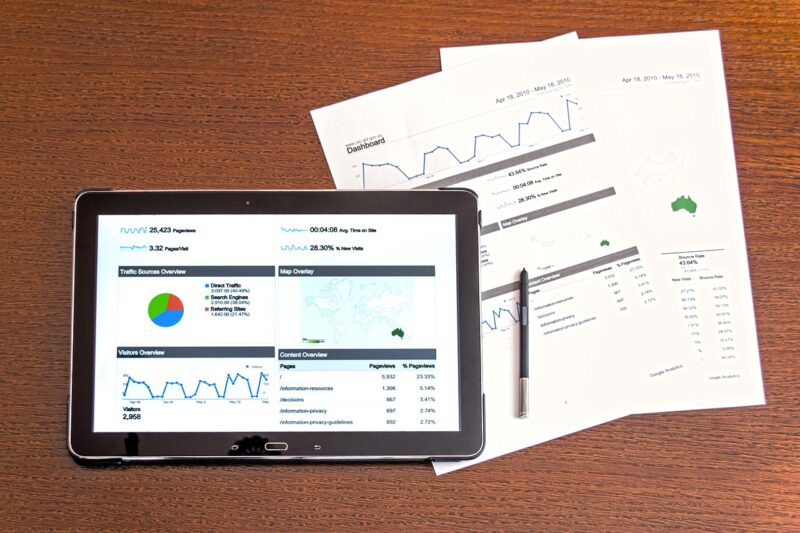
In today’s fast-paced business environment, data has emerged as a cornerstone of informed decision-making. Companies across all industries are now realizing that data-driven decisions can lead to improved outcomes, more effective strategies, and ultimately, increased profitability. This article will delve into how businesses can use data effectively to make smarter decisions and the various strategies they can employ to harness the power of data.
1. Understanding Data-Driven Decision Making
Data-driven decision making (DDDM) refers to the practice of basing decisions on data analysis rather than intuition or observation alone. By implementing a DDDM approach, businesses can reduce uncertainty and risk, enabling them to make choices that are statistically more likely to yield favorable results.
Some of the key advantages of DDDM include:
- Enhanced Accuracy: Decisions based on data analysis tend to be more accurate than those reliant solely on gut feelings, reducing the chance of error.
- Improved Efficiency: Using data helps businesses streamline processes, identify inefficiencies, and allocate resources more effectively.
- Predictive Capacity: Analyzing trends through data enables companies to make predictions about future behavior, helping them to anticipate changes in the market and adjust their strategies accordingly.
Understanding the significance of data-driven decisions is the first step towards implementation for any organization.
2. Types of Data Businesses Can Use
Businesses can utilize several types of data to drive their decisions, including:
- Descriptive Data: This type of data provides insights into past events and helps businesses understand what has happened in the past. Examples include sales figures, website traffic, and customer feedback.
- Diagnostic Data: Diagnostic data examines why something happened. For example, if sales dropped, diagnostic analysis might explore whether it was due to a lack of marketing or changes in consumer behavior.
- Predictive Data: Predictive data utilizes statistical models and machine learning techniques to forecast future outcomes based on historical data. This type allows businesses to prepare for potential scenarios and adapt their strategies accordingly.
- Prescriptive Data: Prescriptive data advises on the best course of action based on predictive and descriptive data analysis. It helps businesses take proactive measures rather than reactive ones.
By understanding the types of data at their disposal, businesses can better tailor their data analysis efforts to support strategic objectives.
3. Gathering the Right Data
Collecting accurate and relevant data is crucial in the decision-making process. Here are some strategies for effective data gathering:
- Customer Surveys: Regularly conducting customer surveys helps gather insights directly from consumers. Surveys can assess product satisfaction, performance feedback, and market demand.
- Web Analytics: Tools like Google Analytics provide detailed insights into website traffic and user behavior, allowing businesses to understand how customers interact with their online presence.
- Social Media Insights: Social platforms offer analytics that help track engagement rates, follower demographics, and content performance, enabling businesses to refine their marketing strategies.
- Sales Data Analysis: Analyzing sales records can yield invaluable information about which products or services are performing well, helping businesses adjust their inventory and marketing based on performance trends.
Gathering the right data is a foundational step to ensure that the analysis performed can lead to actionable insights.
4. Analyzing Data Effectively
Once the data is collected, the next step is analyzing it thoroughly. Here are some methods that can enhance data analysis:
- Data Visualization: Using charts and graphs can simplify complex data sets and highlight trends that may otherwise be overlooked. Tools like Tableau and Power BI can transform raw data into visual insights.
- A/B Testing: A/B testing involves comparing two variables to see which performs better. It’s commonly used in marketing campaigns to determine which ads, offers, or layouts are more effective.
- Statistical Analysis: Grounding decisions in statistical principles can add a layer of confidence. Understanding basics like correlation, regression, and hypothesis testing can help derive deeper insights from data sets.
Effective analysis not only reveals trends but also patterns that can drive strategic decisions.
5. Implementing Data-Driven Decisions
After gaining insights from data analysis, it’s vital to put those insights into action. Here are a few steps for effectively implementing data-driven decisions:
- Align Decisions with Objectives: Ensure that the data-driven decisions are in line with the overall business objectives. This alignment helps maintain focus and direction as the business executes those decisions.
- Communicate Findings: When implementing data-driven changes, it’s essential to communicate the rationale behind them to stakeholders, emphasizing the expected benefits to gain their support.
- Monitor Outcomes: Establish metrics to measure the effectiveness of the implemented decisions. Monitoring provides feedback on what works and what doesn’t, allowing for necessary adjustments over time.
Integrating data-driven insights into business processes can lead to positive change and improved performance.
6. The Future of Data-Driven Decision Making
As we move further into the digital age, the availability and types of data will only expand. Emerging technologies such as artificial intelligence (AI) and machine learning (ML) are becoming vital in refining data analysis techniques. These technologies can identify patterns that humans may miss, offering deeper insights and even predicting consumer behavior with greater accuracy than ever before.
Additionally, data privacy and ethical data use will continue to be paramount in the future. Transparency about data use will foster consumer trust, which is essential for the success of data-driven initiatives.
Conclusion
Utilizing data to drive business decisions is no longer optional; it’s essential for survival in the competitive landscape. By understanding what types of data are available, gathering relevant data, and employing effective analysis methods, businesses can make informed decisions that lead to success. As technology continues to evolve, those organizations that prioritize data-driven decision making will be best positioned to thrive in the digital age. Businesses must commit to fostering a culture of data literacy to uphold continuous improvement and innovation, ensuring they stay ahead of the competition.







